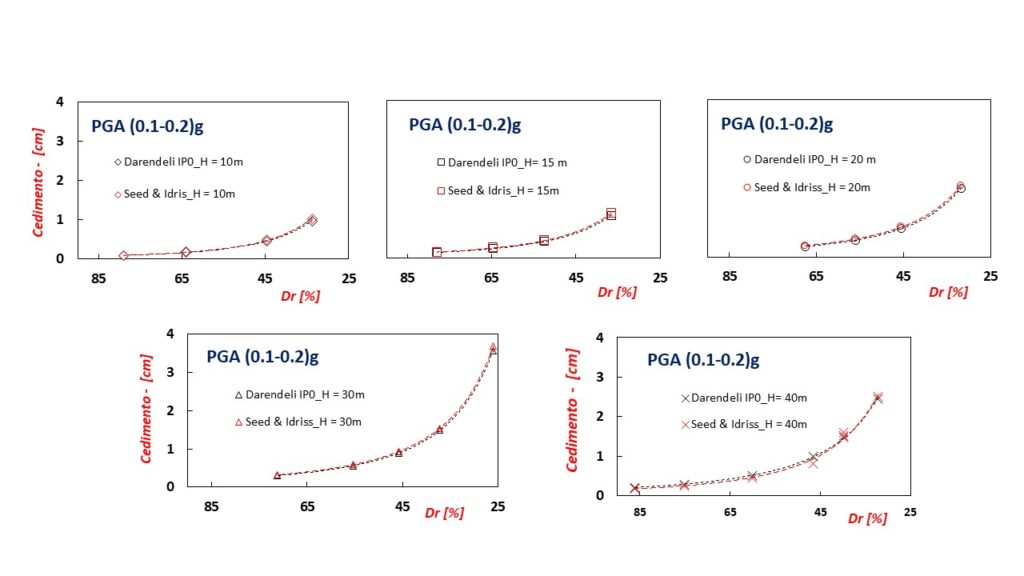
Simplified charts to evaluate settlements from seismic compression in dry loose sand
- 25 Febbraio 2022
- Pericolosità, Pubblicazioni
Autori: Fabozzi S. 1, Porchia A. 1, Fierro T. 2, Peronace E. 1, Pagliaroli A. 3, Moscatelli M. 1
Affiliazioni:
1 Istituto di Geologia Ambientale e Geoingegneria. Consiglio Nazionale delle Ricerche
2 Dipartimento di Bioscienze e Territorio, Università degli Studi del Molise
3 Dipartimento di Ingegneria e Geologia, Università degli Studi “G. d’Annunzio” di Chieti Pescara
2019 VII Italian Conference of Researchers in Geotechnical Engineering (CNRIG). Geotechnical Research for Land Protection and Development. Politecnico di Milano Polo territoriale di Lecco, Italy, 3-5 Luglio 2019.
Abstract
In dry loose sand, seismic cyclic loads can result in contractive volumetric strains (seismic densification or compression) that can induce damages to structures, infrastructures and lifelines, accordingly with post-earthquake damages of past events. In the present work, a procedure has been adopted to define simplified charts to predict the possible effect of the seismic compression phenomenon in dry loose sand in terms of soil permanent settlements, to be applied in Seismic Microzonation (SM) studies in the perspective of seismic risk reduction.
The adopted procedure estimates the volumetric strains starting from shear strains profiles calculated by parametric 1D site response analyses in which some key-parameters affecting the dry sand behaviour are varied: the relative density and shear wave velocity profile, thickness of the compressible sand layer and its non-linear behaviour, the depth of the seismic bedrock, the input motion amplitude and its frequency content. The proposed charts provide the estimation of settlements in function of the input PGA classes, depth of the compressible sand layer and relative density or, alternatively, shear wave velocity.

Parole chiave
CONTRATTO CONCERNENTE L’AFFIDAMENTO DI SERVIZI PER “PROGRAMMA PER IL SUPPORTO AL RAFFORZAMENTO DELLA GOVERNANCE IN MATERIA DI RIDUZIONE DEL RISCHIO SISMICO E VULCANICO AI FINI DI PROTEZIONE CIVILE NELL’AMBITO DEL PON GOVERNANCE E CAPACITÀ ISTITUZIONALE 2014-2020”– CIG 6980737E65 – CUP J59G16000160006
Copyright © 2017 - Progetto grafico e sviluppo Heap Design



